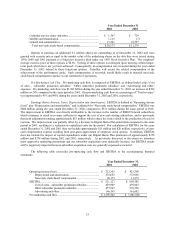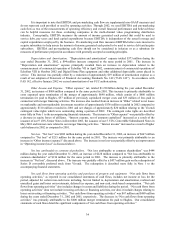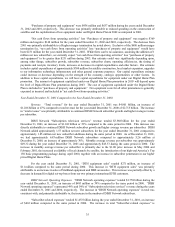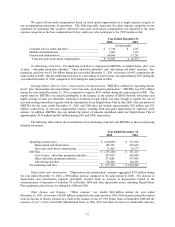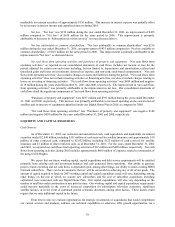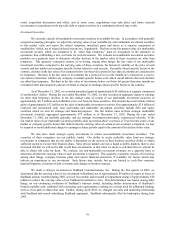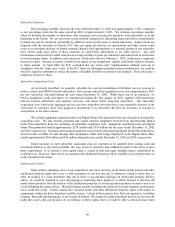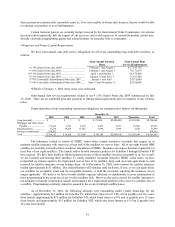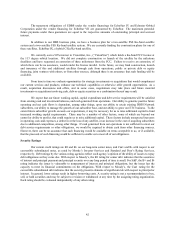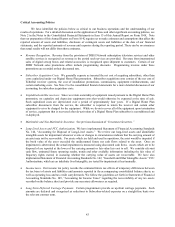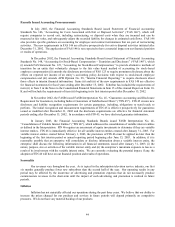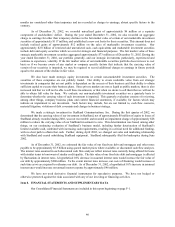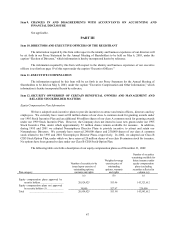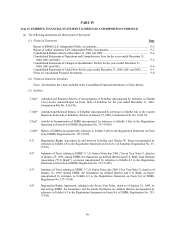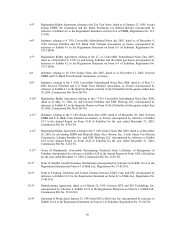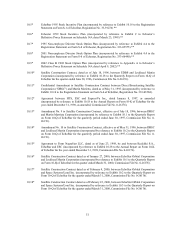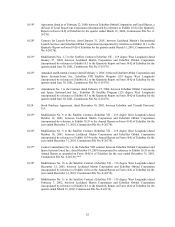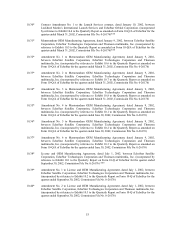Dish Network 2002 Annual Report Download - page 45
Download and view the complete annual report
Please find page 45 of the 2002 Dish Network annual report below. You can navigate through the pages in the report by either clicking on the pages listed below, or by using the keyword search tool below to find specific information within the annual report.43
Critical Accounting Policies
We have identified the policies below as critical to our business operations and the understanding of our
results of operations. For a detailed discussion on the application of these and other significant accounting policies, see
Note 2 in the Notes to the Consolidated Financial Statements in Item 15 of this Annual Report on Form 10-K. Note
that our preparation of this Annual Report on Form 10-K requires us to make estimates and assumptions that affect the
reported amount of assets and liabilities, disclosure of contingent assets and liabilities at the date of our financial
statements, and the reported amounts of revenue and expenses during the reporting period. There can be no assurance
that actual results will not differ from those estimates.
• Revenue Recognition. Revenue from the provision of DISH Network subscription television services and other
satellite services is recognized as revenue in the period such services are provided. Revenue from international
sales of digital set-top boxes and related accessories is recognized upon shipment to customers. Certain of our
DISH Network sales promotions offers include programming discounts. Programming revenue under these
promotions are recorded at their discounted rate.
• Subscriber Acquisition Costs. We generally expense as incurred the net cost of acquiring subscribers, other than
costs capitalized under our Digital Home Plan promotion. Subscriber acquisition costs consist of the net cost of
EchoStar receiver systems, the cost of installation promotions, commissions, equipment reimbursements, and
certain marketing costs. See Note 2 to the consolidated financial statements for a more detailed discussion of our
accounting for subscriber acquisition costs.
• Capitalized satellite receivers. Since we retain ownership of equipment issued pursuant to the Digital Home Plan
promotion, we capitalize and depreciate equipment costs that would otherwise be expensed at the time of sale.
Such capitalized costs are depreciated over a period of approximately four years. If a Digital Home Plan
subscriber disconnects from the service, the subscriber is required to return the receiver and certain other
equipment to us or be charged for the equipment. While we do not recover all of the equipment upon termination
of service, equipment that is recovered after de-activation of a Digital Home Plan subscriber is reconditioned and
re-deployed.
• Marketable and Non-Marketable Securities. See previous discussion of “Investment Securities.”
• Long-Lived Assets and FCC Authorizations. We have implemented Statement of Financial Accounting Standards
No. 144, “Accounting for Disposal of Long-Lived Assets.” We review our long-lived assets and identifiable
intangible assets for impairment whenever events or changes in circumstances indicate that the carrying amount of
an asset may not be recoverable. For assets which are held and used in operations, the asset would be impaired if
the book value of the asset exceeded the undiscounted future net cash flows related to the asset. Once an
impairment is determined, the actual impairment is measured using discounted cash flows. Assets which are to be
disposed of are reported at the lower of the carrying amount or fair value less cost to sell. We consider relevant
cash flow, estimated future operating results, trends and other available information including the fair value of
frequency rights owned, in assessing whether the carrying value of assets are recoverable. We have also
implemented Statement of Financial Accounting Standards No. 142, “Goodwill and Other Intangible Assets.” FCC
Authorizations, which are an indefinite lived intangible, are tested for impairment at least annually.
• Income taxes. Our income tax policy records the estimated future tax effects of temporary differences between
the tax bases of assets and liabilities and amounts reported in the accompanying consolidated balance sheets, as
well as operating loss and tax credit carryforwards. We follow the guidelines set forth in Statement of Financial
Accounting Standards No. 109, “Accounting for Income Taxes” regarding the recoverability of any tax assets
recorded on the balance sheet and provide any necessary allowances as required.
• Long-Term Deferred Carriage Payments. Certain programmers provide us up-front carriage payments. Such
amounts are deferred and recognized as reductions to Subscriber-related expenses on a straight-line basis over
the relevant contract term.


